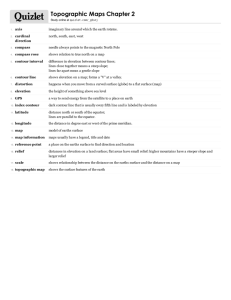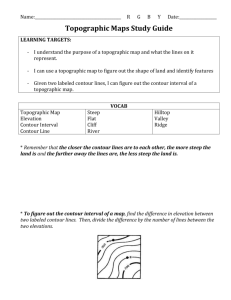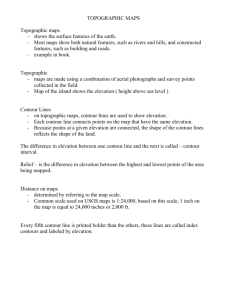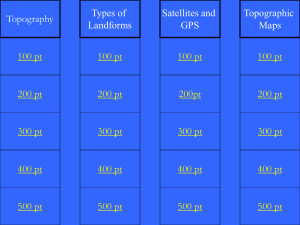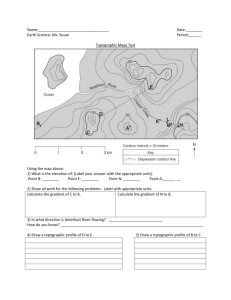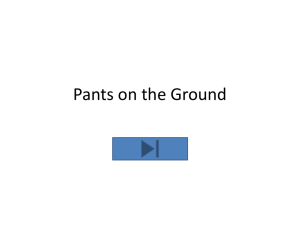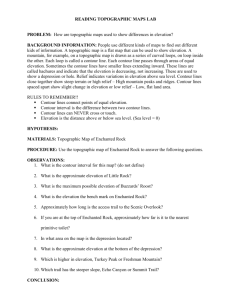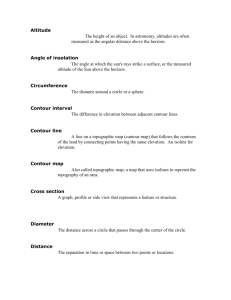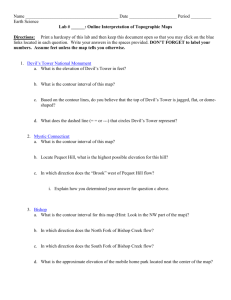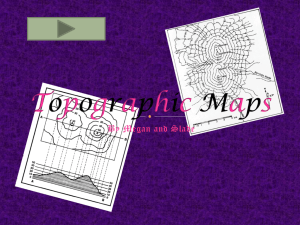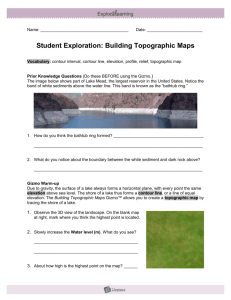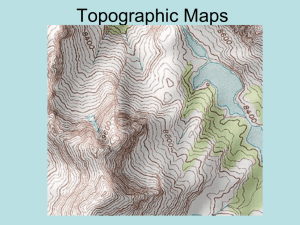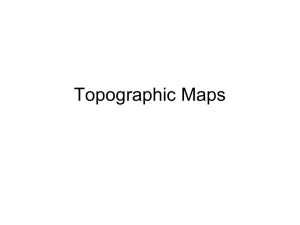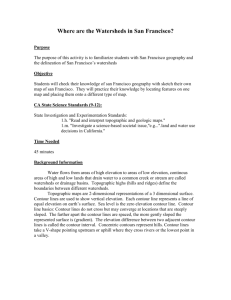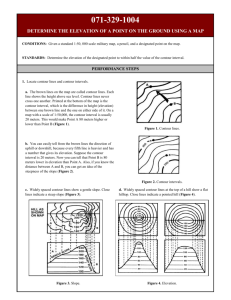Seeing Watersheds-Topographic Maps: What a Relief! Answer Key
advertisement
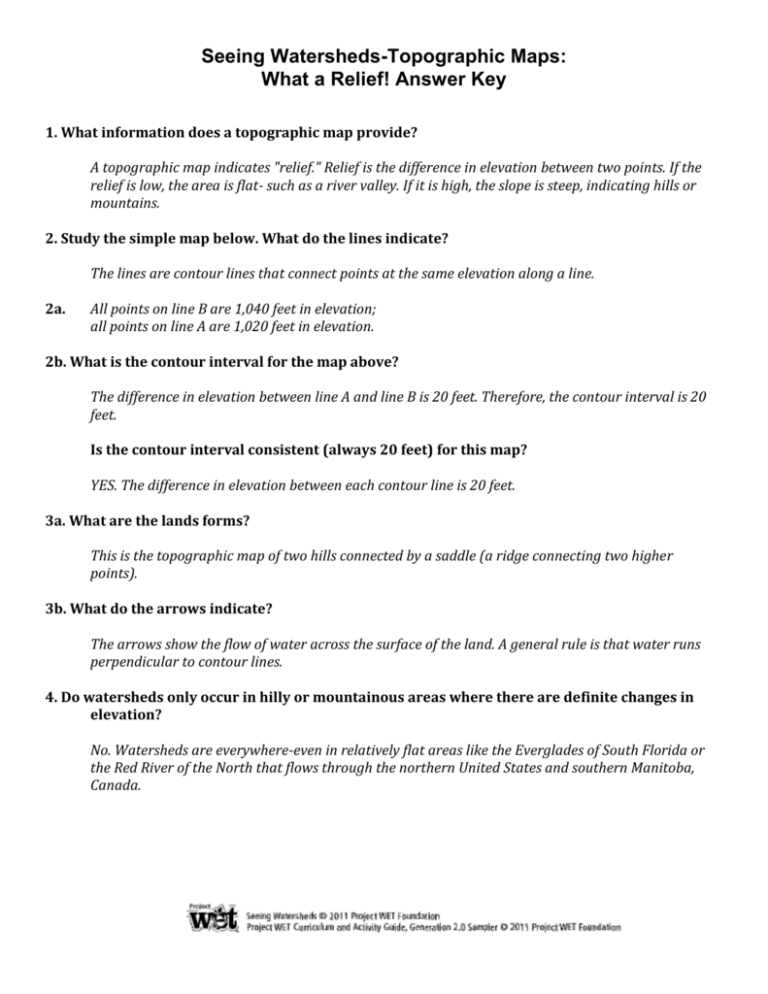
Seeing Watersheds-Topographic Maps: What a Relief! Answer Key 1. What information does a topographic map provide? A topographic map indicates "relief." Relief is the difference in elevation between two points. If the relief is low, the area is flat- such as a river valley. If it is high, the slope is steep, indicating hills or mountains. 2. Study the simple map below. What do the lines indicate? The lines are contour lines that connect points at the same elevation along a line. 2a. All points on line B are 1,040 feet in elevation; all points on line A are 1,020 feet in elevation. 2b. What is the contour interval for the map above? The difference in elevation between line A and line B is 20 feet. Therefore, the contour interval is 20 feet. Is the contour interval consistent (always 20 feet) for this map? YES. The difference in elevation between each contour line is 20 feet. 3a. What are the lands forms? This is the topographic map of two hills connected by a saddle (a ridge connecting two higher points). 3b. What do the arrows indicate? The arrows show the flow of water across the surface of the land. A general rule is that water runs perpendicular to contour lines. 4. Do watersheds only occur in hilly or mountainous areas where there are definite changes in elevation? No. Watersheds are everywhere-even in relatively flat areas like the Everglades of South Florida or the Red River of the North that flows through the northern United States and southern Manitoba, Canada.


